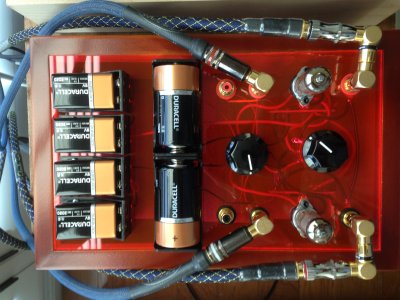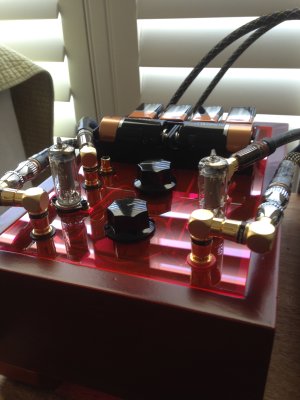I made the O-rings. It's pretty easy. You inject 100% RTV Silicon into vinyl tubing that has a 1/8 inch internal diameter. I cut my tubing into 4 inch lengths before injecting the silicon, otherwise the back pressure gets pretty high. You let it sit for a week or so and then cut the vinyl tubing length wise with an Exacto or utility knife.Cut carefully, you want to just penetrate the vinyl but not the silicon.Hold the leading edge of the vinyl tubing with hemostats or needle nose pliers, this will keep your fingers out of the way(I, of course, learned the hard way).Usually, if you cut most of the way through, you can split the vinyl by spreading it with your fingernail.
Once you split the vinyl you peel the length of silicon out of the vinyl.DON'T throw away the cut vinyl tubing! You will need it to complete the O-ring.Cut the Silicon into lengths of 1 3/4 inch.Roll some paper up creating a tube with a 5/8 inch diameter.Take the cut vinyl tubing and cut some 5/16 inch pieces.Insert one end of your cured Silicon into the 5/16 cut vinyl. Add some fresh silicon in the other end followed by the opposite end of the cured Silicon. You'll see excess squish out.Now push the paper tube over the joined o-ring. This will keep the ends from slipping out of the splice while this whole thing cures.You will end up with an O-ring that is slightly smaller than the tube socket. I tried this with larger diameter O-rings, but when I mounted the socket and retainer, the socket was not evenly supported by the O-ring. I decided that the o-ring does need to stretch a little so that it fits tightly enough to not pinch out when the retainer is tightened. That's why I don't think that you want to cut the o-ring before you install it.You might be able to lift the socket of a completed Quickie enough to get the O-ring on,but you will have to stretch it more since the top of the socket has a larger diameter than the pin end.If there is enough interest in this, and with Doc's Blessing, I could post a step by step pictorial but I don't want to clog up the Forum with something that might turn out to be a big nothing. Remember, I haven't heard a Quickie in the stock configuration, so i can't say for sure that this improves anything.



